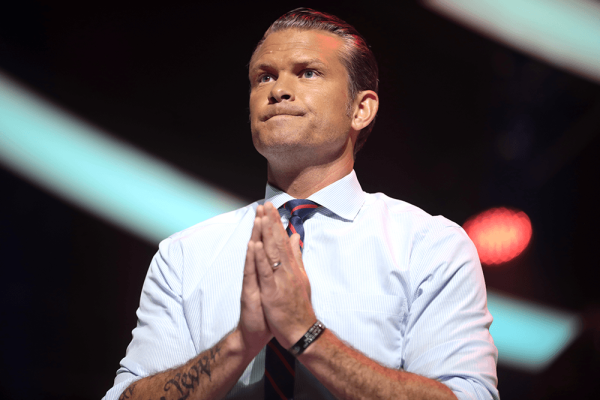On Aug. 4, 2016, a group of organizers and I received notice of John MacKenzie’s suspected suicide inside Fishkill Correctional Facility. At the time, I was completing a master’s program at Union Theological Seminary and working as an organizing intern with Release Aging People in Prison (RAPP), an organization committed to advocating for one of the most invisible and forgotten populations in the United States: elderly and infirm people serving long-term sentences in prison. Like so many other incarcerated people, MacKenzie’s life was unnecessarily cut short. He was a victim of the New York State Parole Board and a victim of society’s inability to see the human being behind the violent crime for which he was convicted.
At the time of his passing, MacKenzie was 70 years old and had spent 40 years of his life behind bars. During that time, he took full responsibility for his crime, completed rehabilitation requirements, and achieved a spotless disciplinary record. MacKenzie applied for and was denied parole nine times. When he was denied a 10th and final time, it would be easy to understand how he might be overwhelmed by the knowledge that the parole board would perpetually punish him for the one thing he could never change: the nature of his underlying crime. It seemed that no matter how much he transformed, the board would not let him go; as a society, we would not let him go. His death was and is, a systemically induced suicide.
Put one way: MacKenzie took his own life after being repeatedly denied parole by the New York State Parole Board. Put another way, MacKenzie finally succumbed to the state’s insidious and gradual killing of his soul. MacKenzie’s suicide indicts the violence of an incarceration system that either literally executes people or pushes people toward death.
Risk and gain of early release
While MacKenzie’s death was a unique tragedy, his experience with the parole board was typical. The board interviews more than 11,000 people a year, holding roughly 60 15-minute hearings a day. Most parole applicants are denied. RAPP’s co-founder, Mujahid Farid, was himself denied parole nine times over the course of 18 years, despite receiving four college degrees, founding lifesaving in-prison programs, and having an overall prison record that exemplified transformation.
The public discourse around criminal justice reform largely revolves around releasing nonviolent offenders. But this narrow focus will never be enough to fundamentally alter the incarceration system. The majority of people in prison have been convicted of violent crimes, and they are habitually denied parole. True criminal justice reform is impossible until we include people convicted of violent crimes in the conversation.
Parole issues also dovetail with racial justice issues — particularly in cases where people are held as political prisoners for participating in liberation movements. I spoke with Laura Whitehorn, RAPP’s co-founder, about the organization’s strong advocacy for the release of Eddie Conway, who was a leading member of the Baltimore chapter of the Black Panther Party. Whitehorn, who is a former political prisoner herself, noted that plenty of Black and brown people are disproportionately convicted and then denied parole both because of their race and because they are presumed to be guilty of their underlying crime.
The parole board routinely ignores factors including the convicted person’s education level, the person’s age when convicted, and what sort of home he or she would return to. Instead of considering these factors, the board justifies denying parole based singularly on the severity of people’s underlying crimes.
The absurdity of this justification for denying parole to people who have committed violent crimes is underscored in MacKenzie’s 2015 motion to hold the board in contempt — to show that the board disobeyed the court’s order. Granting the contempt motion and imposing a $500-a-day fine, Dutchess County Supreme Court Justice Maria G. Rosa wrote, “It is undisputed that it is unlawful for the parole board to deny parole solely on the basis of the underlying conviction … It is undisputed that this petitioner has a perfect institutional record for the past 35 years. This case begs the question, if parole isn’t granted to this petitioner, when and under what circumstances would it be granted?”
Still, the board held its ground.
The majority of people who are being held because of their past violent convictions are also elderly, raising important questions about when punishment for a past harm should end. The number of incarcerated people over age 50 in New York State rose 98 percent between 2000 and 2016 and now exceeds 10,000 — with men over 50 making up more than 17 percent of the total incarcerated population and women over 50 making up over 15 percent. Research shows that the recidivism rate for elderly people who were convicted of violent crimes is significantly lower than their younger counterparts. Similarly, parolees have lower recidivism rates than inmates who served full sentences. A New Jersey study commissioned by the Pew Charitable Trusts found that "inmates released to parole supervision are less likely to be rearrested, reconvicted, and reincarcerated for new crimes than inmates who serve, or 'max out,' their full prison sentences and are released without supervision." Therefore, the argument that people convicted of violent offenses ought to be imprisoned because they are a risk to society is weak and rooted in false assumptions about who is likely to repeatedly do harm.
In responses to grassroots efforts that have pushed for carceral reform, politicians have paid some attention to the incarceration crisis. At the federal level, President Barack Obama made strides by commuting the sentences of 214 nonviolent offenders, surpassing the past nine presidents combined in total commutations. More recently, President Donald Trump pardoned or granted clemency to at least 25 people convicted of federal offenses, including Alice Marie Johnson and some of Trump's allies. Trump also passed the First Step Act, which shortens mandatory minimum sentences for nonviolent drug crimes, eases the three-strikes rule, improves prison conditions, and aims to reduce the federal prison population. RAPP organizers and others point out that although these individual acts of clemency are newsworthy, they are limited in their transformative power. Past bills have only garnered support when violent crimes were excluded from the discussion. But in order to significantly reduce the U.S. prison population, we must have a national conversation about releasing people who have been convicted of violent offenses.
Even after learning the facts and statistics, I found myself asking: What is at stake in asking for people convicted of violent crimes to be released? Moreover, what relationship does the de-carceration conversation have to biblical texts, and how do Paul, Joseph, and others give us insight into the incarceration experience? If, as a Christian, I believe that all people can be redeemed, then who am I to say that people incarcerated for violent crimes are beyond rehabilitation?
Biblical considerations
God calls us to set both ourselves and the captives free (Isaiah 61:1 and Luke 4:18), and refuses to label incarcerated people (and all people for that matter) as solely victims or solely perpetrators. Biblical texts complicate the victim-perpetrator paradigm and highlight the transformative power of alternative approaches to justice that do not rely on retribution.
Joseph: In Genesis 39, Joseph is imprisoned after being wrongfully accused of rape. God later blesses Joseph and elevates him to be Pharaoh’s second in command. It can be tempting to skip over what Joseph does next with his new power: He seizes people’s private property to store up grain for the famine and gradually creates a system of dependence, enslaving the Egyptians (Genesis 47:13-26).
Even as Joseph forgives his brothers, he harms others. Joseph takes the people’s money, then their livestock, then their land, before he ultimately takes the people themselves as slaves. When we allow ourselves to complicate Joseph’s narrative and our own personal narratives, we are able to see that most violence perpetrated by individuals is a result of long-term systemic violence. What if Joseph had not been sold into slavery by his brothers? What if he had not been wrongfully accused and thrown in prison? Perhaps he would not have found it necessary to do violence to others by reducing them to servitude. If we can see the truth about biblical heroes like Joseph, then maybe there is something that we can learn about the violent effects of the current U.S. incarceration system and how it further perpetuates cycles of violence.
Paul: As most Christians know, Paul begins his journey as a Jewish Roman citizen who persecutes Christians. After having a miraculous encounter with Jesus, Paul converts to the Jesus movement and becomes an apostle himself. After performing miracles, preaching the gospel, and freeing a fortune-telling enslaved woman, Paul and his companion, Silas, are thrown in prison (Acts 16:22-24). Ironically, the men become captives after freeing a captive. But while imprisoned, Paul and Silas pray and sing hymns to God. Miraculously, the walls of the prison are shaken by a violent earthquake and they too are set free (Acts 16:25-26).
Retribution does not transform Paul; retribution couldn’t save MacKenzie’s life. Paul is transformed from a persecutor to a proselyte through communal accountability and self-indictment. Personal and communal transformation shake the foundations of prisons.
The criminal on the cross: Finally, when Jesus forgives the criminal on the cross (Luke 23:32-43), he completely subverts the notion that state violence in the name of justice is useful. In the gospel of Luke, the author does not tell readers what the other two people on the crosses were convicted of; we only know that one person on the cross mocked Jesus while the other intervened on Jesus’ behalf. The just one says, “‘Don’t you fear God?’ he said. ‘Since you are under the same sentence? We are punished justly, for we are getting what our deeds deserve. But this man has done nothing wrong.’”
The ambiguity of the man’s crime and sentence is telling. The Bible is silent on the details because the nature of the crime he has committed is not what matters in the story — what matters is the man’s witness — his willingness to do right even while suffering crucifixion at the hands of the Roman empire. Because of the man’s faithfulness, Jesus tells the man, “Truly I tell you, today you will be with me in paradise.” Put differently, Jesus tells the man that although he was bound by Roman chains for his crime, he will indeed be set free because of his repentance. Jesus' version of justice looks nothing like the punitive justice of the Roman empire.
Joseph, Paul, and the criminal on the cross illustrate the hard truth about interpersonal violence. All of them are harmed and do harm to others. However, their stories also provide a new way for examining the function of state-sanctioned and systemic violence. None of them are made better for the simple fact of having been imprisoned or executed by Egypt or Rome. Their potential transformative power lies in the fact that they committed themselves to self-examination and communal accountability.
What now?
“If the risk is low, let them go!”— that is RAPP’s slogan and it ought to be the guiding ethical principle for the New York State Parole Board. State laws and regulations already require the board to consider an inmate’s potential for rehabilitation and to use a sophisticated risk-assessment tool to help determine whether it is safe to return a person to the community. But because the board members have broad discretion, it has proven difficult to hold them accountable.
RAPP organizers and others have begun to challenge the process, proposing legislation like the Fair and Timely Parole Act. The bill states that the parole board ought to release people who are eligible unless they present a current and unreasonable risk or unless such risk cannot be mitigated by parole supervision. The bill lists factors that the board should consider based on who the person is at the time of their hearing, including academic achievements, vocational education, and therapy attendance.
RAPP is also advocating for the Elder Parole Act, which provides that the board should automatically consider parole release for people aged 55 and older who have served at least 15 consecutive years in prison.
Lastly, RAPP has demanded a fair and fully staffed parole board, arguing that instead of its current composition, the parole board should be fully staffed by 19 commissioners who are social workers, psychologists, nurses, and other professionals who embrace notions of mercy, redemption, and rehabilitation. Here RAPP has been quite successful: They have helped change commissioners by pressuring New York Governor Andrew Cuomo and the New York State Senate committee that oversees commissioner confirmation hearings. Whitehorn told Sojourners that RAPP’s work has had positive effects: Parole rates have gone up and the number of elders held in New York State has declined.
The push for transformation will not be easy — it is easier to allow the state to do violence to others on our collective behalf. Perhaps we cleanse society of people convicted of violent crimes like John MacKenzie to convince ourselves that we are not like them. But, in the process of killing their souls, we also chip away at ours.
This article was made possible in part with support from Sacred Writes, a Henry Luce Foundation-funded project hosted by Northeastern University that promotes public scholarship on religion.
Got something to say about what you're reading? We value your feedback!






